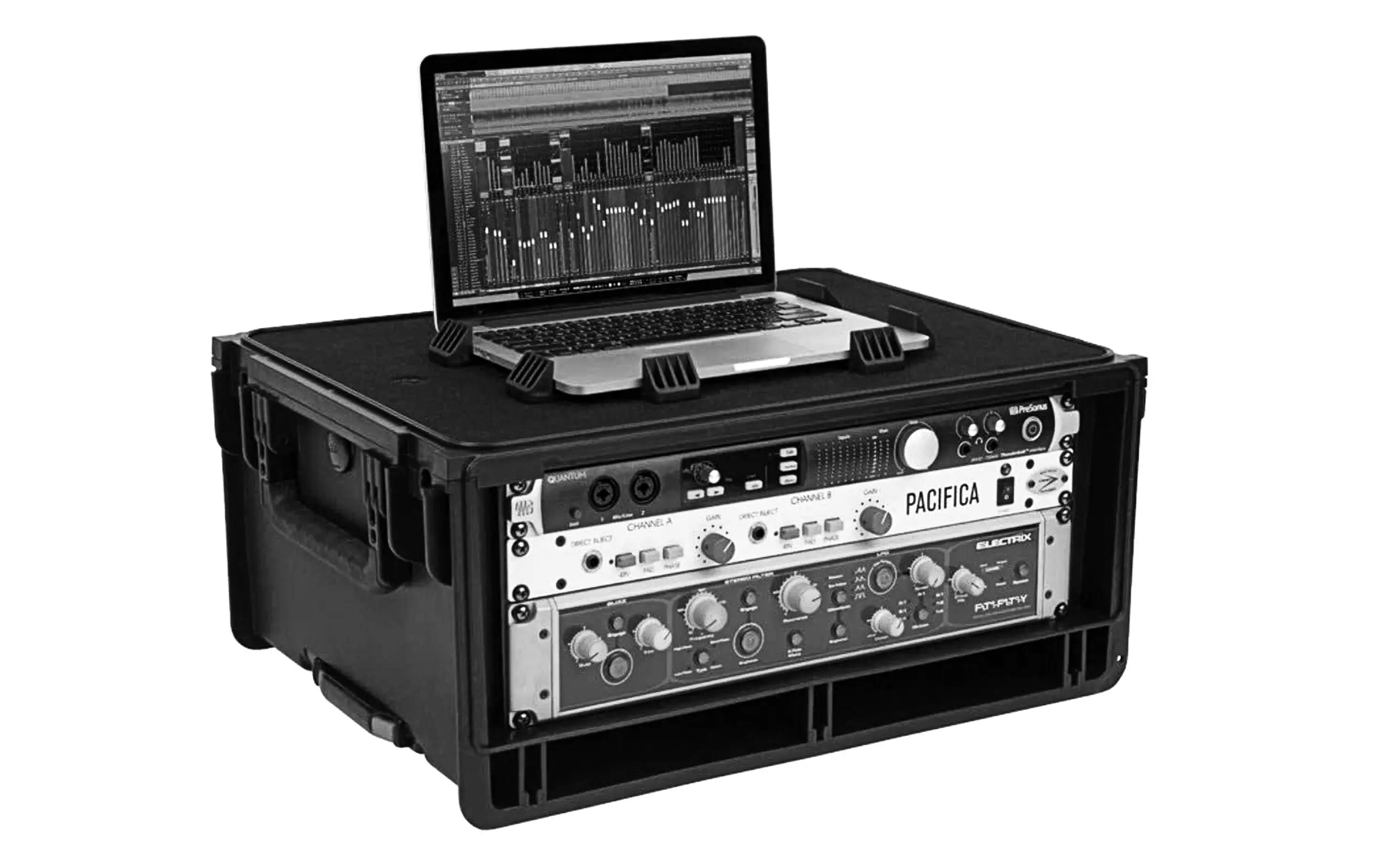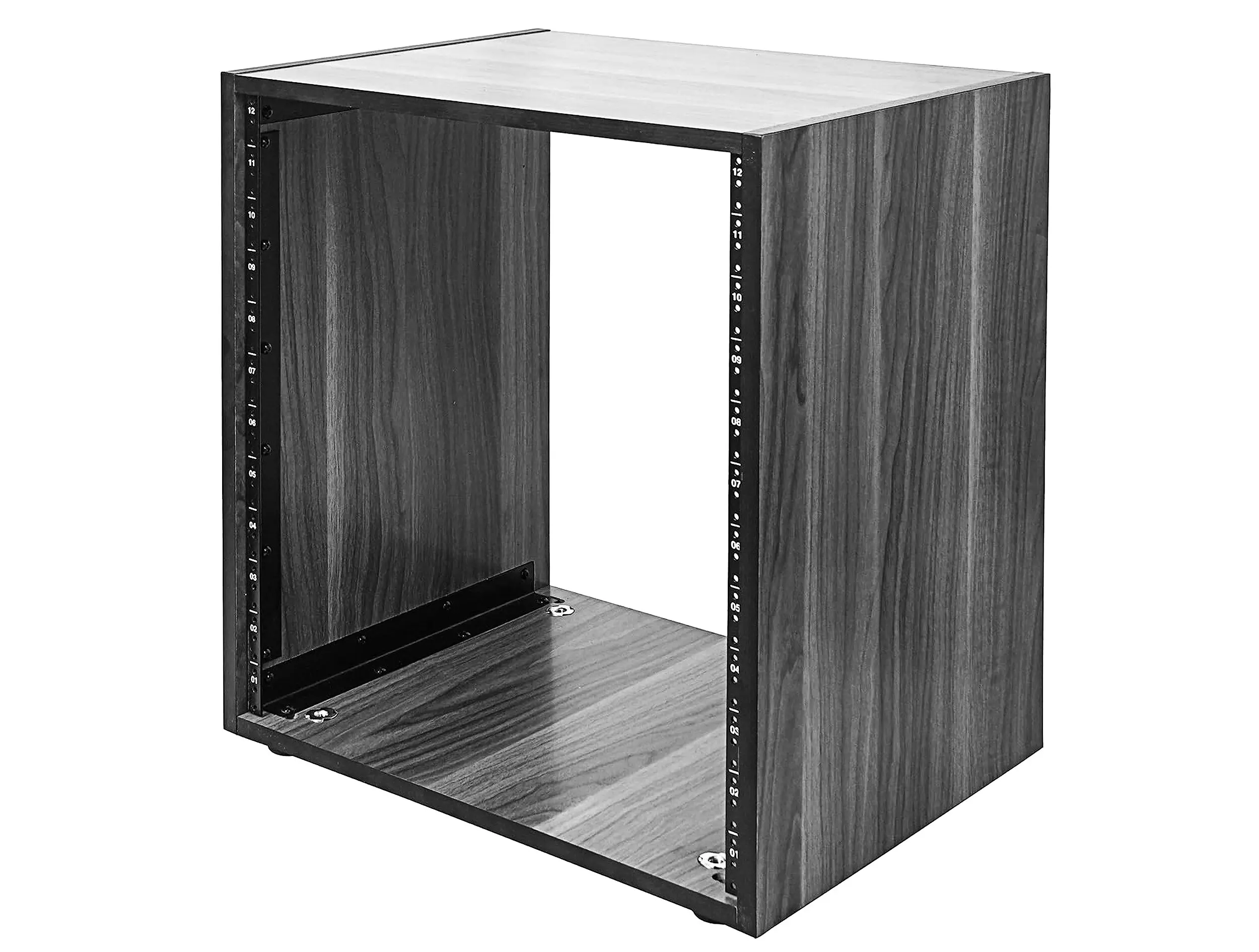A rack space, often denoted as ‘U’, represents a unit of measurement in the world of music production and audio engineering.
It standardizes the dimensions of equipment racks.

What is Rack Space: Table of Contents
In the diverse and complex realm of music technology, the term “rack space” signifies a fundamental concept that underpins the organization and operation of audio equipment. It might seem like a minor detail to the uninitiated, but understanding rack space is integral to setting up an efficient and functional music production environment.
Just like understanding notes is key to reading music, appreciating the concept of rack space is vital to interpreting and configuring the physical layout of audio gear. This article unravels the intricacies of rack space, demystifying its measurements, its historical origins, its practical implications, and its direct influence on equipment design.
Whether you’re a seasoned professional or an aspiring musician, getting to grips with the idea of rack space will empower you to create an optimal music production setup. So, let’s dive into the world of rack spaces and explore the pivotal role they play in music technology.
What Does “Rack Space” Mean in Music Technology?
In music technology and sound engineering, “rack space” is a term that describes the standardized measurement unit utilized for rack-mounted audio equipment. When you picture a music studio, a movie post-production suite, or a live concert setup, you’ll often imagine a collection of equipment housed within rack enclosures. These structures are designed to accommodate multiple pieces of hardware, each designated its own area, called a rack space.
Each of these rack spaces corresponds to the term “U,” a universal standard established to maintain consistency across different equipment types and manufacturers. In essence, a “U” or a “rack unit” is equivalent to 1.75 inches or 44.45 millimeters. So, when we talk about rack space, we’re discussing how many “U” spaces an equipment piece occupies or how many such spaces are available within a rack enclosure.
How is Rack Space Measured?
“Rack space” is quantified through a globally recognized system grounded in the Electronic Industries Association’s (EIA) standards. The crucial measure we’re interested in here is known as the ‘U,’ short for a ‘unit,’ and it stands as the universal yardstick when dealing with rack spaces.
In its essence, a ‘U’ is equal to 1.75 inches or 44.45 millimeters, and it’s this measure that forms the fundamental building block of rack space measurement. It’s worth noting that when we say something like “this equipment is 2U,” we’re indicating that the piece of gear occupies a height of 3.5 inches in the rack.

It’s not just about height, though. A standard rack itself has a standardized width of 19 inches or 482.6 millimeters. This uniform width makes it easier for different pieces of equipment from various manufacturers to fit into the same rack.
Depth, however, is a less strictly defined measure in rack enclosures. Rack depths can vary to accommodate different types of equipment, but there are generally accepted common depths, such as 600mm, 800mm, and 1000mm.
What’s the History Behind Rack Spaces?
In the early days of electronics, devices came in all shapes and sizes, with no standardized means of housing them. This led to issues of disorganization, inefficiency, and a lack of interchangeability, creating a significant challenge for professionals working with these devices. The need for a more systematic approach became evident, laying the foundation for the inception of the rack space concept.
The concept of rack spaces has its roots in the telecommunication and railroad industries of the 19th century. These industries pioneered the use of relay racks, which were open-framed structures designed to house and organize various equipment. However, it was not until the 20th century that the concept of rack spaces, as we know them today, came into existence.
The Electronic Industries Alliance (EIA) played a central role in standardizing the rack space concept. With a mission to ensure compatibility and interoperability among products, the EIA introduced the EIA-310 standard for cabinets, racks, and panels. This standardization initiative became a game-changer for the electronics industry, including music production and sound engineering.
With ‘U’ as a universal measure, the height of audio equipment could now be standardized, bringing consistency to rack-mounted equipment design. This has resulted in seamless equipment integration and efficient space utilization, transforming the landscape of professional audio production environments worldwide.
How Does Rack Space Influence Equipment Design?
The concept of rack space has a profound influence on the design and form factor of audio equipment. Given its standardized nature, it sets a clear guideline for manufacturers to follow, encouraging uniformity and compatibility among devices across the industry.
The influence of rack space extends beyond mere physical dimensions. It also impacts the device’s overall design, including factors such as heat dispersion, weight distribution, and ease of access for maintenance. This has led to devices being designed with these considerations in mind, in addition to the predefined rack space dimensions.
Rack spaces dictate that devices should have a width of approximately 19 inches, but the height, measured in ‘U’, can vary. The flexibility in the vertical dimension allows for the accommodation of various types of equipment within a single rack, while the uniform width ensures compatibility and interchangeability.
Designing audio equipment with rack spaces in mind results in efficient use of space and seamless integration of different devices within a rack. Moreover, it provides the ability to upgrade or swap out components without drastically altering the configuration, making it an integral aspect of equipment design in music production and sound engineering.
How to Calculate the Number of Rack Spaces Needed for Your Setup?
Understanding how many rack spaces you’ll need for your setup is an essential aspect of planning any sound system or studio space. Here is a straightforward, step-by-step guide to help you navigate through this process:
- List Your Equipment: Start by creating a list of all the equipment you plan to rack-mount. This could include audio interfaces, processors, power amplifiers, network switches, servers, and more. You’ll want to include any gear that is designed to fit into a standard 19-inch equipment rack.
- Identify Unit Sizes: Each piece of rack-mountable gear will have a specific ‘U’ size. You can typically find this information in the product specifications or manual. If you can’t locate it, you can also measure the height of the equipment and convert it to ‘U’ using the standard conversion (1U = 1.75 inches or 44.45mm).
- Add Up the Units: Once you’ve determined the ‘U’ size of each item on your list, add them all together. This sum will give you the total number of rack spaces you’ll need.
- Consider Future Additions: Always consider the future while planning your setup. If you think you may add more gear over time, it’s a good idea to account for these potential additions now. Add a few extra rack spaces to your total to allow for growth.
- Factor In Ventilation: Remember, electronic equipment generates heat, and adequate ventilation is crucial for long-term reliability. It’s recommended to leave some empty rack spaces between devices that generate a lot of heat, such as power amplifiers.
- Choose the Right Rack: Now that you have your total, you can choose the appropriate rack for your needs. Remember that racks also come in ‘U’ sizes, so you’ll want to select one that has at least as many ‘U’ spaces as your total.
Frequently Asked Questions About Rack Spaces
While the concept of rack spaces might seem straightforward, it often raises several questions, especially for those who are new to the world of music technology. Here, we answer some of the most common queries to provide further insight.
What equipment typically uses rack spaces?
A wide variety of audio and music production equipment uses rack spaces, including audio interfaces, power conditioners, signal processors, microphone preamps, rackmount computers, servers, and more.
Are all rack spaces the same size?
While the height for a single rack space (1U) is standard, the width and depth can vary. The most common width for audio equipment is 19 inches.
Is it necessary to fill all rack spaces?
While it’s not necessary to fill all rack spaces, it’s generally a good idea to use blanking panels for any unused spaces. This helps with airflow and prevents dust from collecting inside the rack.
Can I install a device that is less than 1U?
Yes, some equipment is designed to be less than 1U. However, it may require special mounting brackets.
What is a rack rail?
A rack rail is a metal strip with holes spaced at ‘U’ intervals. They are used to mount equipment within the rack enclosure.
How can I cool my rack-mounted equipment?
Proper ventilation is key to cooling rack-mounted equipment. Leaving empty spaces between devices, using fans, and ensuring a room’s air conditioning is adequate can help maintain appropriate temperatures.
Is it okay to stack gear directly on top of each other in a rack space?
While possible, it’s not recommended as it could lead to overheating. It’s better to leave some space for air circulation.
What’s the difference between a rack and a cabinet?
While both can house equipment in rack spaces, a rack is typically open-framed, while a cabinet is enclosed, providing better security and environmental control.
What is the difference between a vertical rack space and a horizontal rack space?
Horizontal rack spaces are the standard, where the ‘U’ measurement applies. Vertical rack spaces refer to the mounting space on the sides of a rack, used for cable management or power distribution units.
How can I reduce noise from my rack-mounted equipment?
Using quiet fans, placing noisy equipment at the bottom of the rack, or using a soundproof rack cabinet can help reduce noise.

